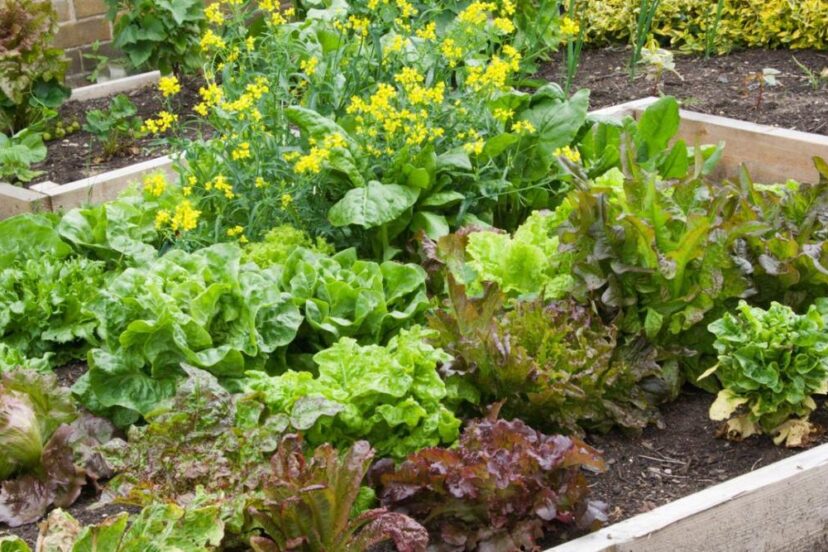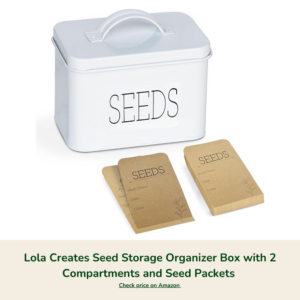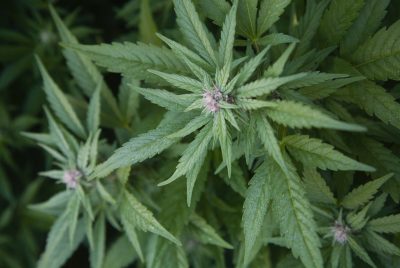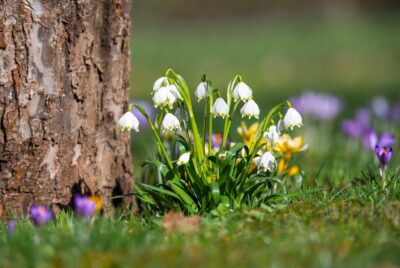February Garden Planning: Conquer your Garden for Spring
February is often overlooked in the gardening calendar as a crucial month to lay the groundwork for a vibrant and flourishing garden. As the winter chill begins to wane, it’s the perfect moment to dive deeper into garden planning and design with enthusiasm and anticipation.
In this Article:
- Assessing your Garden
- Weather Considerations
- Winter Weeds
- Seed Ordering and Organization
- Check Stored Harvest
- Pruning
- Trees
- Shrubs
- Garden Planning
- Garden Plants
- Garden Additions
- Vertical Structures
- Raised Beds
- Containers
- Pets and Wildlife
- Indoor Plants
Each month we’ll continue our garden maintenance and project series by exploring the tasks you can do to help your garden grow and thrive throughout the year. The content below is general guidance and not for a specific zone or region.
In our January article: Garden Maintenance: January’s Jump Start, we guided you through a series of essential projects to kick off the year on the right foot. If, like me, you still have a few lingering tasks from that list, fear not. February provides an excellent opportunity to continue making progress, with ample time to wrap up. Keep pushing forward, and you’ll be rewarded with a well-maintained garden ready for the upcoming seasons
Assessing Your Garden
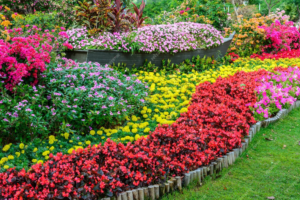
Each month, before embarking on new endeavors, take a stroll through your garden. Identify areas that may need attention, any damage from February storms, note the condition of your lawn and plants, structures and envision potential improvements/additions.
Don’t forget to bring your garden planner or a notepad as you assess your garden. This essential tool allows you to consistently jot down notes during your walk. Your garden planner serves as a companion throughout your gardening journey, providing a valuable reference point throughout the year. Additionally, don’t overlook recording the visits of wildlife and their habits & needs to enhance your gardening experience.
Weather Considerations
February’s unpredictable weather requires careful consideration. Plan for potential frost and temperature fluctuations to protect your garden from unexpected weather events:
- Keep fragile plants covered until your last frost date
- Walking on grass and soil can be harmful. Stay on mulch, stones, or garden paths to protect dormant plants, hibernating bugs, and bees
- If it snows, remember to brush off snowfall from bushes and plants
- Continue to feed and water the wildlife in the colder weather
Winter Weeds
Oh, such a pain those winter weeds! They come out of now where and can take over. Get a head start on these once your soil can be worked and remove them all. Spread a pre-emergent or better yet, choose an organic option.
Seed Ordering and Organization
If you haven’t ordered your seed catalogs or seeds yet, now is the time to do so. When ordering online, make sure to check the selling company’s website for the best time to place your order. Don’t forget about buying seeds locally or at garden centers, seed swaps and exchanges too.
It’s also time to take stock in what you already have before purchasing more. Organize and lay your seeds out by planting dates. This way you can visualize the order in which they can be planted. Planning your garden planting schedule ahead, save time.
Pruning
February is an ideal time to get out and prune trees and shrubs. Pruning removes dead or diseased wood, shapes trees or shrubs, promotes new growth and keeps plants healthy.
Depending on your experience in pruning, talk with a local professional gardener and/or reference a quality pruning guide such as Pruning and Training, Revised New Edition: What, When, and How to Prune. Also investing in a good set of pruning shears is vital. Using clean, sharp blades makes for clean cuts that don’t damage the tree or shrub.
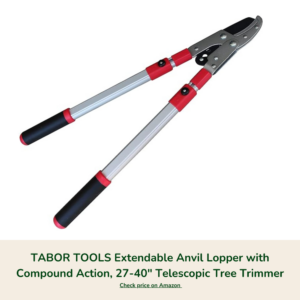
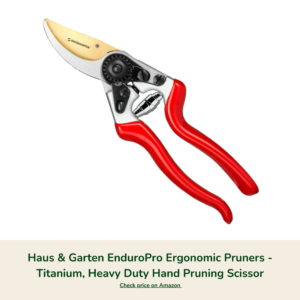
Trees
Winter pruning encourages new growth for the coming year. Deciduous trees are showing their overall shape and structure and it’s easier to see which branches are crossing or growing inward. During this dormant period, not only are trees dormant, so are insects and diseases that can harm fresh-cut trunks and branches.
- Evergreen shrubs (holly and boxwoods) and trees (spruce and fir) are pruned in late winter or early spring when they are still dormant and before new growth appears.
- Pines are pruned in early June to early July.
- Oak, and maple type shade trees should be pruned in winter or early spring.
- Spring-flowering trees such as dogwood are to be pruned after they flower.
Also Read:
- Starting Seed Indoors: Six Steps to Spring Gardening
- Vertical Vegetable Gardening
- Vertical Vegetable Gardens: 15 Best Veggies
- Companion Planting: A Green Thumb Guide
Shrubs
The time to prune shrubs can be a bit confusing. When to prune and when not to prune depends on whether the flowers bud on old vs new wood.
- Shrubs that form their flowers on new wood – growth that will occur in the coming spring, should be pruned in late winter or early spring.
- Shrubs that form their flowers on old wood – growth from the previous year, should be pruned in late spring or early summer after the flowers fade.
Garden Planning
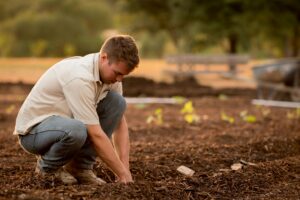
Starting a garden is one of the most rewarding things you can do. Like any project, good planning is essential for success. To begin with, you should put a few parameters in place like type of garden, size, budget, and layout, etc. Jot these down, so you can refer to them when needed. Knowing how much room you need to achieve the look you want with size, color, and texture helps keep you focused. Also think about garden borders, furniture, and areas for patios and grass.
- Choose garden type: Before you break ground, you should decide what type of garden you want to grow – flower garden, vegetable garden, shade garden, sitting area, etc.
- Pick garden spot: Make sure this aligns with the types of plants you want. If you want a vegetable garden, you will need lots of sun.
- Garden aspect: Know your garden aspect–the direction your garden faces–to determine which areas get plenty of sun and where the shadows are during the day. If your garden has a north facing aspect, it will be sunny most of the day.
- Sun or shade: Knowing the amount of sun or shade your area gets helps choose plants accordingly. Sun-loving plants tend to be those with the most color and love being in the sun. Plants to consider are rhododendrons, geraniums, sedum, coneflower, lavender, or marigold to name a few.
- Many of the best shade plants do well in light shade and have blooms to perk up the space including bleeding heart, Hosta, hydrangeas, ferns, and coleus.
- Determine budget: Most people underestimate the cost of creating a new garden. When preparing your budget add 10% at the end for surprises you aren’t expecting.
- Garden layout: Roughly draw the layout of your garden to help determine the size, shape, structures, and what you are planting. The general rule is to put taller plants in the back, mid-sized in the middle and smaller plants in the front.
- Plants: Consider the plants you want to grow, taking into effect other decisions you have made including companion plants that attract pollinators. It’s also not too late to start seeds indoors to help reduce costs.
- Structures: After you’ve chosen your plants, think about the structures you need to support those plants. If planting a climbing plant like beans or flowering vine – how will you support its growth. Put them in place prior to the growing season if your soil is not frozen.
Plants
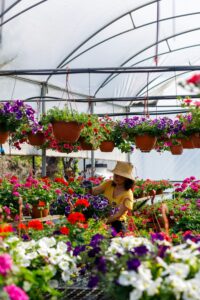
Choosing plants for your garden plan is the most important step in gardening whether it’s for new gardens, containers or adding to existing beds. Know how much room you need to achieve the look you want with size, color, and texture. Also think about garden borders, furniture, and other areas for patios and grass. If these are already in place – it’s time to pick your plants! If not, step back and plan the hard scape area(s) before proceeding.
- Space: Most plants need space to grow and if they don’t have it, well you may pay the price. Measure the size of your space and be realistic, start simple–you can always add more next year.
- Soil: Different types of plants thrive in different soils, so understanding the pH level of your soil leans you to plants that grow in that type. If you see rhododendron growing in your neighborhood, there’s a good chance your soil type will be perfect for the plant too. You can also test your soil for reassurance. The texture and consistency of your soil is also important as it will determine the level of nutrition and drainage which is specific to the types of plants. Take a sample to your local garden center and they can help you determine which type you have, and which plants work best.
- Evergreens: These are the backbone to your space. These plants provide a feeling of a well-established space and provide color throughout the year.
- Groupings: Always group plants in odd numbers, to create broad swathes of colors, textures, and height.
- Containers: Thriller, filler, and spiller is the age-old adage for container gardening when choosing plants. Just like garden spaces, check whether the placement is in the sun or shade and choose accordingly.
Garden Additions
When deciding to add structures, furniture, or plants to your garden, many of the same decisions and choices when planning a new garden can be used. Remember to determine the basics: type, aspect, budget, plants, and structures that will add to your existing garden
Vertical Structures
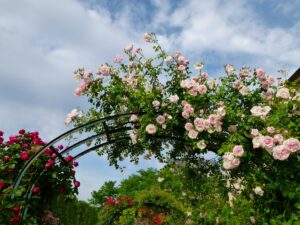
Whether you want to enhance a fence, a new garden space, patio or a veggie garden, structures can be used to add shade, height, and interest to a garden. When choosing a structure, think about the type of setting you are trying to achieve and the material of the structure.
- Arbors: Are a permanent structure and commonly used as a garden entryway, focal point, or an entrance to an outdoor sitting area. Consider climbing roses, wisteria, or other climbing flowers to scramble over them.
- Trellises: Allow you to maximize your growing space, improves air circulation, and goes well with raised garden beds. Sprawling or tall growing fruits, veggies and flowers can be showcased on these vertical structures.
- Obelisk: A freestanding structure useful to grow tall crops. They add height and visual interest to container gardening offering support to climbing plants. Fast growing flowering annuals like Thunbergia work well with this structure.
- Tripods: When blooms or branches are plentiful and heavy, tripods create an interesting shape in the garden as well as supporting these plants.
- Pergolas: Draw people in with their attractive structure and break up the afternoon sunlight coming through. Lining a pergola perimeter with containers and planting with flowering vines adds colors to your area. These are permanent structures, add value to your house and are a project on their own. Consider hiring a expert to help design and build.
Raised Beds
Raised beds are becoming more acceptable and practical for our gardening needs. They also add another layer of beauty all while maximizing the growing space, improving drainage, growth, and tending to our plants with greater ease. A few advantages of raised beds:
- Beautiful hardscaping piece that adds beauty to the garden all year long.
- Start with fresh, healthy soil instead of amending the soil you already have.
- Gives plants’ roots more vertical depth to grow downwards and more room horizontally to fit more plants
- Drain more quickly than in-ground beds
- Stay warmer than the ground soil extending your growing time in the fall and spring
Containers
Now is a great time to start planning what plants and additional containers you’ll need for spring. Container gardening is an easy way to bring a splash of color to your porch, patio, or even a shady area. There are many benefits to container gardening including versatility, mobility, flexibility, less disease problems, fewer pests, less weeds, no heavy tools and more.
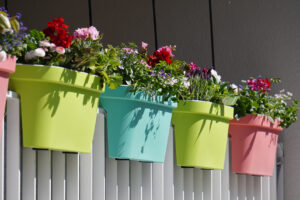
The most important feature in a container is good drainage with the appropriate number of holes in the bottom. Containers with no drainage can result in plants being waterlogged. Containers come in many different types, shapes, sizes, and cost so choose what is best for your space and budget.
- Pick your pot first. If you already have them, great! This will determine the number of plants you’ll need, so take note of their size and depth.
- Choosing the size of the container depends on your space. A small sitting space or entry way, a 10–16” container would be best. In a larger area, you have more options including a tall container with a smaller diameter.
- Choose either ceramic or plastic. Anything else, unless treated, will break down and disintegrate over time.
- Plastic pots are light weight, good for cost-conscious purchases and get the job done. Glazed ceramic pots are heavy but come in a wide selection of styles and colors to suit your space.
- Terra cotta pots are stylish, but wick moisture and can become stained.
- Use good quality soil specifically for container gardening. Don’t cut costs here as choosing the wrong soil can lead to plants being leggy and not growing well.
Pets and Wildlife
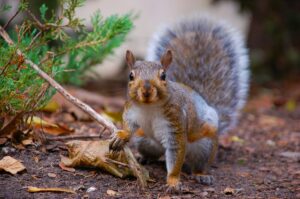
When choosing any plant whether flower, herbs, or veggies, consider the pets and wildlife you have. Some plants are poisonous to our pets like lilies and should not be planted. And if you have lots of birds, insects, squirrels, deer, visiting, you should consider this in your plantings too.
Indoor Plants
This is the time to start feeding indoor plants with a diluted organic liquid when watering. Keep an eye out for pests like spider mites, and mealybugs. Tackle these before they get out of hand. Non-chemical methods like a simple plant shower are usually the most successful.
Final Thoughts
Gardeners are getting restless. Days are getting longer with warmer weather, but before you begin planting, refer to your garden journal to review ideas and where you have room to extend or fill in your existing gardens. Garden planning sets the stage for a successful and rewarding gardening season. By taking the time to assess, prepare, and implement, you pave the way for a garden that thrives throughout the year.
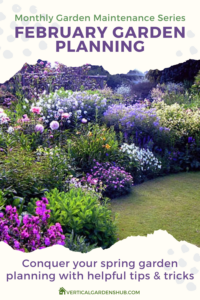
FAQs:
Q: Can I start planting seeds directly in the garden in February? A: While some hardy seeds can be sown directly, starting seeds indoors provide an early advantage and better control over growing conditions.
Q: How do I protect my plants from late frost in February? A: Use frost cloth or row covers to shield vulnerable plants. Stay informed about local weather forecasts to take preemptive measures.
Q: What are the benefits of companion planting? A: Companion planting maximizes space, enhances pollination, and can act as a natural pest deterrent, promoting overall garden health.
Q: Is container gardening suitable for all plants? A: Yes, many plants thrive in containers. Choose containers based on the plant’s size and ensure proper drainage to prevent waterlogging.
Q: How often should I water my garden in February? A: Adjust watering frequency based on the specific needs of your plants. Check the soil moisture regularly and water when the top inch feels dry.

